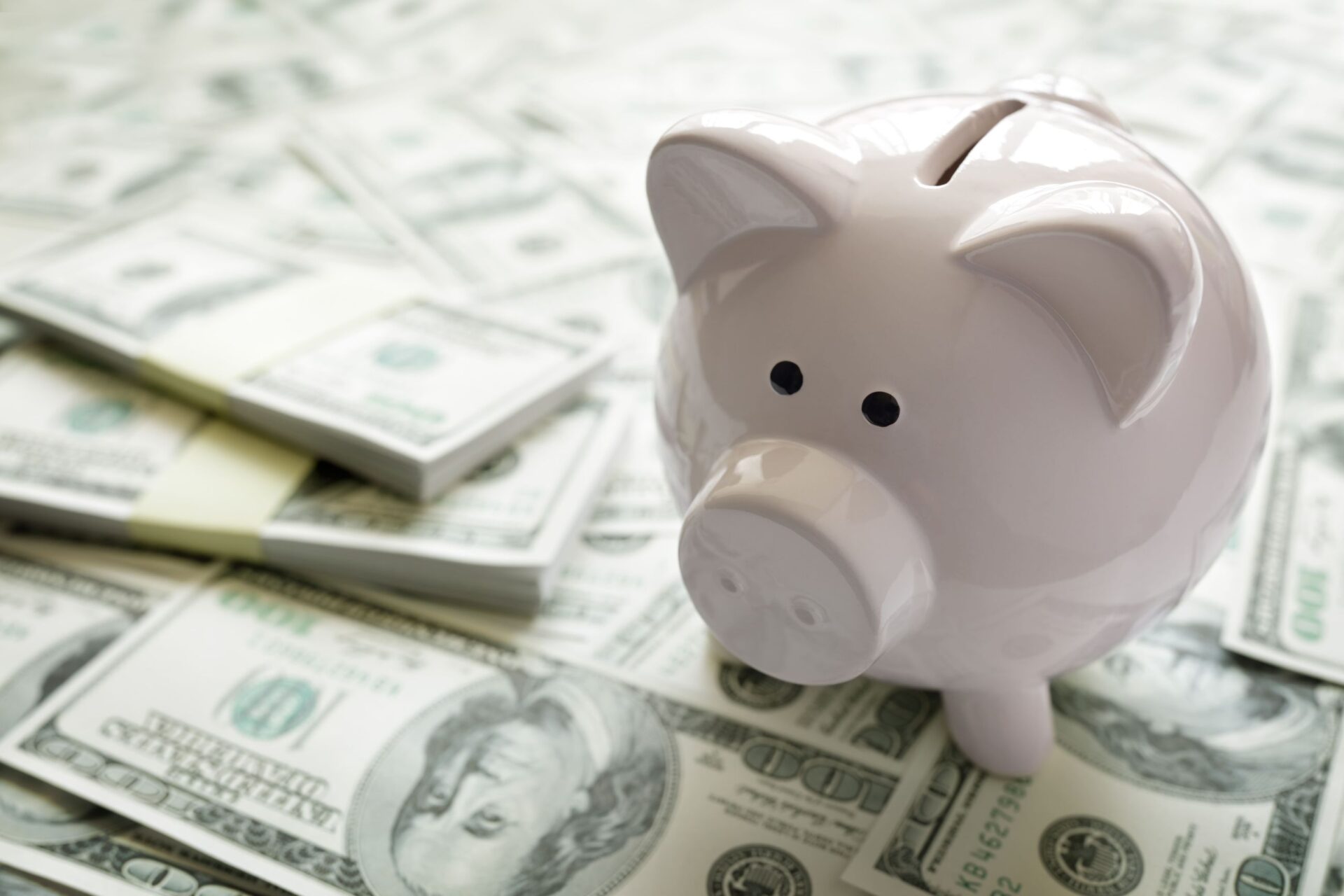8 powerful fintech design trends that are going to revolutionize banking in 2021

Top Fintech Trends 2024
#1 Fintech design with dopamine-rewarding gamification
Fintech Design Trends: Gamification
Remember your last trip to the bank?
The entire ambiance out there is quite formal & monotonous. Not to forget, the deluge of forms and formalities, be it opening a new account or applying for a loan – everything seems a tad complicated.
What fintech designs of 2021 aim to do is to break this chain.
Break the chain of monotony and complicated formalities that end up intimidating an average user and create a more warm and welcoming atmosphere. The idea at the core of any digital product design is to make things as user-centric as possible. And not just for the end-users, but also for the internal stakeholders, aka, the employees in the finance & fintech sphere.
One way to go about it is gamification. And no, that doesn’t mean creating games on fintech platforms. It refers to the application of typical gaming elements such as rewards, point scoring, competition, badges, etc. to simulate healthy financial behavior.
When you think finance & fintech, gaming and dopamine are probably the last words that come to mind. However, when implemented correctly, gamified fintech platforms can boost customer engagement and loyalty while augmenting brand identity.
Besides, it’s probably one of the biggest competitive advantages your fintech product can have – a design that delights users while also carrying out safe transactions.
Innovative fintech platform fostering healthy habit formation in kids & teens.

Key takeaway: Implement the tenets of gamification in a way that decreases emotional decisions and impulsivity in financial matters and rewards users for showing matured financial acumen & behavior.
#2 One-in-a-million brand identity through fintech design
A core fallacy deep-rooted in the fintech industry is that design is more of a “good-to-have” (rather than a “must-have”). Often design was viewed from the perspective of marketing and packaging. This is probably why most fintech platforms follow a typical bootstrap design pattern.
A bootstrap design is nothing but a standardized design template that offers negligible user experience and delight. In other words, as mentioned above, a dull, personality-less, complex interface that does little to make a user’s life easy.
These new-age fintech website designs are challenging the above-mentioned assumptions. challenged time and again. 2021 is the era of bold fintech brands that have dared to be different by utilizing the potential of design to attract and retain customers.
Highly customized and refreshing new designs that strike a chord with the users are now fast replacing traditional bootstrap fintech designs (a characteristic of legacy systems and incumbents.
The biggest advantage of taking the tailor-made rather than bootstrap path is the sheer level of connection it helps in building and nurturing with users. Tailor-made fintech designs are fast transforming finance from a “cold” and “unemotional” industry to an exceedingly user-friendly domain that genuinely cares about its customers.
Key takeaway – Design is the strongest tool to create a unique brand identity, one that is highly targeted, addresses the pain points of the users, and provides solutions in a way no other fintech brand does.
#3 100% Mobile-friendly fintech app designs
The widespread Covid-19 pandemic has made one thing clear. A brick-and-mortar-only business model will have a hard time surviving the ever-increasing rise of digital products and services. And this is the core idea that has driven fintech disruption over years. Bringing secure and authentic transactions to the tap of a button.
The slow-moving queues, the signing of tens of documents, one tiny human error and then having to repeat the entire process – all of these bureaucratic burdens faced by a typical consumer are now a thing of the past.
Today, well-designed fintech products have made all of the above (and more) obsolete.
And it’s not just that mobile banking or fintech app designs have smoothened the user journey, they are equally effective in cutting down operational costs & errors for financial institutions by automating several processes.
In a world with more than 3.4 billion smartphone users and 40,000 searches on Google per second, it’s safe to say that to meet your potential customers, serve their needs, and make them proponents of your brand, your fintech brand has to go 100% mobile-friendly.

Key takeaway: Making your fintech brand 100% mobile-friendly is just not about making the designs responsive for every screen. It’s about understanding customer behavior on a smartphone and optimizing user experience based on that.
#4 Adding a touch of familiarity with social fintech designs
With the rise of online communities such as social media platforms, there has been a tectonic shift in how people view money and are ready to discuss it openly within their circles.
Furthermore, take a look at Gen Z (and millennials too) tweeting about crushing student loans or publicly bragging about their success in stock/crypto markets.
The ripples of such new-age social behavior are fueling something called “social fintech designs”, designs that are at the intersection of social and financial behavior patterns.
“Social fintech designs” (fintech designs that are at the intersection of social and financial behavior patterns) are a result of this new-age social behavior.
This implies fintech designs that allow users to collaborate their financial goals, skills, learnings, & acumen within social networks are undoubtedly going to witness huge popularity as they augment the factor of trust.
Additionally, apps that help users to split bills, recommend investment plans, get loans for businesses faster, and more add oodles of credibility and customer retention (you are more likely to use something if your family/friends are using it).
Key takeaway: There is a fine line between going social with personal finances and disclosing critical information on open platforms. Building secure systems that let users collaborate with others on financial matters is the key
#5 Impeccable data visualizations in fintech designs
Fintech means numbers and a whole lot of them.
Minute details about money debited/credited, date of transactions, the volume of transactions, everything is numbers. The one thing about the human mind is that numbers, in their pure numerical form, don’t make much sense to us. We need to see some patterns or trends to gain a better understanding of what is happening.
That is where data visualization comes to the rescue. By allowing users to view their financial transactions in a graphical way (pie-charts or bar graphs) is an excellent way to serve financial information in an easy-to-digest way.
Compare this experience to one where a user has to swim through a ton of data, with no clue whatsoever, unable to get a clear picture of their financial situation.
Which of these two situations is more likely to help the user get a better grasp of what’s happening with their money?
While the second one is highly derivative of the “bootstrap fintech website design” we discussed earlier, the latter is a fintech design trend that is going to set you apart from the crowd. More innovative digital products take this one step further by adding machine learning algos that personalize and streamline these bits of information more.

Key takeaway: The next industrial revolution is all about personalization. The products or brands that can personalize and visualize stuff better for the users are the ones that users will naturally gravitate towards.
#6 The age of super-apps in the fintech industry
Once upon a time, fintechs with mono-functionality were quite popular among users as they were simple, performed the one task they were supposed to and didn’t complicate things.
Fast forward to 2021, where instead of getting 10s of stuff done on 10s of apps, users now demand a single digital touchpoint for their end-to-end financial transactions.
Aka, a super app.
Digital financial solutions are turning advanced by the day, trying to include a wide range of financial solutions under one umbrella. Building a super app with 100s of useful features and functionalities while still keeping things simple, intuitive, and user-friendly is the need of the hour.
This means in addition to the usual UI/UX/product design, designers have to gain expertise in top technology trends such as blockchain, gamification, nudge theory, voice processing, big data, cloud computing, and so on.
The super app, along with its far-reaching range of functionalities, must also closely adhere to the brand tone, values, and mission. A fintech app design that ranks high on diverse relevant functions and consistent branding opens vistas for scaling and expansion like none other in the fintech domain.
Comprehensive digital platform for users to calculate taxes, file for returns, and more.
Key takeaway: It’s critical to the success of any fintech super app to have a greater degree of collaboration between UX architects, designers, developers, and more to ensure smooth sailing for the users (who are going to be mostly millennials and Gen Z).
#7 Use of AR/VR in fintech designs to augment user experience
Most people associate AR/VR with the gaming and entertainment industry. But as more and more legacy systems open to digital transformation, AR/VR features are gaining high acceptance in traditional domains such as finance, real estate, and more.
The scope of AR/VR in the fintech industry mostly encompasses (but is not limited to)
- Data visualization
- Virtual trading
- Wealth management
- Virtual payments
- Biometric security
- Customer service
- Virtual branches
- Increasing financial literacy
- Recruitment and training
- Customer acquisition
As brands and customers turn more tech-savvy, the demand for virtual operations along with AR elements increases. AR/VR has already started making some waves in the fintech domain, especially post-covid in how banks and other financial institutions interact with their customers. It’s only time these features gain higher popularity among the masses in 2021.
Key takeaway: Though AR/VR features seem to fit in a diverse range of fintech offerings, these don’t need to fit in all. Since it’s a fairly new tech, at least for a huge proportion of users, one should use discretion in adding these features within apps.
#8 Fintech designs that go beyond packaging & selling
Roughly 2 decades ago, design was seen as something that was restricted to packaging, marketing, and selling a financial product. Its prime function was to make things look good. But what design means to finance and fintech products today is the complete opposite.
In today’s world, when anyone says “innovation”, what they are saying is “design”. It is no longer the pretty pink bow on top of the product bundle. It creates approaches that remove roadblocks from user journeys and renders solutions that inform, engage, and delight.
Increasingly, it’s becoming critical to make design an integral part of the product. When design becomes a part of the product DNA, great things begin to unfold. For starters, the brand becomes a representation of its world views, enhancing customer loyalty and nurturing stronger and long-lasting relationships with them.
.png)
Key takeaway: In 2021, fintech design has to be perceived as a business ideology as a whole, rather than treat as one of the many disparate elements that need to be assembled to create a whole product.
What does design mean for fintech in 2024? Top Fintech Industry trends
Design is not one of the steps.
Design is not one of the many processes.
Design is what the business is.
And this holds for fintech products as well.
The world is witnessing stratospheric changes in what customers want, how they want it, and when it is coupled with lightning-fast advances in technology, far-reaching disruption is inevitable.
For fintech startups and enterprises (and the designers working within this domain), the key takeaway must be that gaining exceptional competitive advantage comes with catering exceptional services to your customers which comes with making design a core value of the business.
A word from our CEO & Founder, Aashish Solanki
“We have been at the forefront of creating new-age fintech products. NetBramha Studios has been disrupting the finance & fintech landscape in India and beyond through the power of design.”
From Axis Bank and McKinsey & Co to startups like IAMIN, we have helped a diverse range of finance brands leverage fintech designs.
We have been undeterred advocates of designing stunning and functional user experiences. Our fintech designs are powered with data, design thinking, and innovative tech such as AI, ML, and more.
Having successfully catered to more than 25 brands in the finance and fintech domain, we can proudly say that we have built unrivaled domain expertise here.
If you are a fintech brand, wanting to make it big through digital design and transformation, contact us here for a free design consultation.


